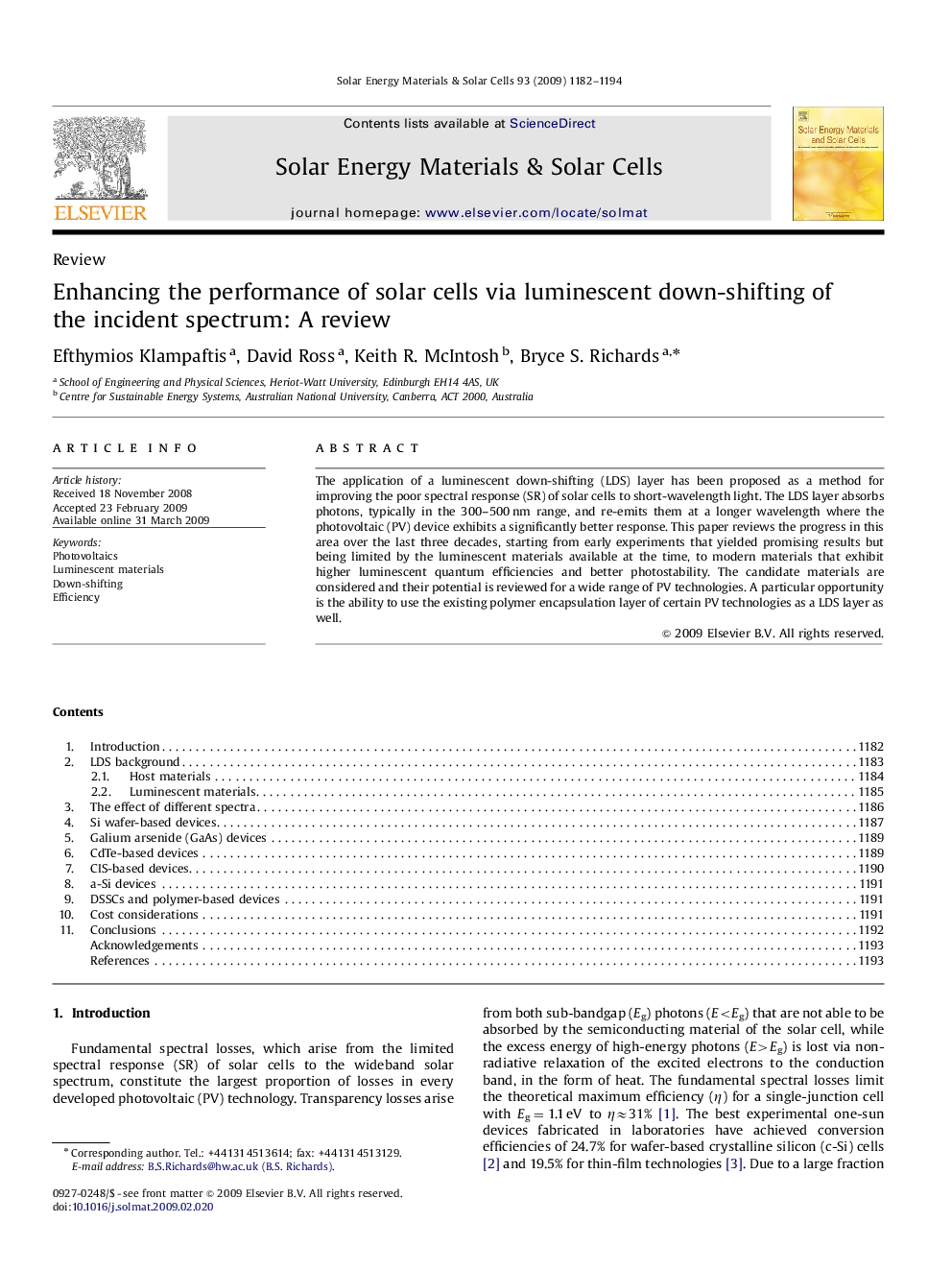| Article ID | Journal | Published Year | Pages | File Type |
|---|---|---|---|---|
| 80450 | Solar Energy Materials and Solar Cells | 2009 | 13 Pages |
The application of a luminescent down-shifting (LDS) layer has been proposed as a method for improving the poor spectral response (SR) of solar cells to short-wavelength light. The LDS layer absorbs photons, typically in the 300–500 nm range, and re-emits them at a longer wavelength where the photovoltaic (PV) device exhibits a significantly better response. This paper reviews the progress in this area over the last three decades, starting from early experiments that yielded promising results but being limited by the luminescent materials available at the time, to modern materials that exhibit higher luminescent quantum efficiencies and better photostability. The candidate materials are considered and their potential is reviewed for a wide range of PV technologies. A particular opportunity is the ability to use the existing polymer encapsulation layer of certain PV technologies as a LDS layer as well.
